AMABHUNGANE
#EarthCrimes: Free State municipalities’ foul failure on wastewater treatment
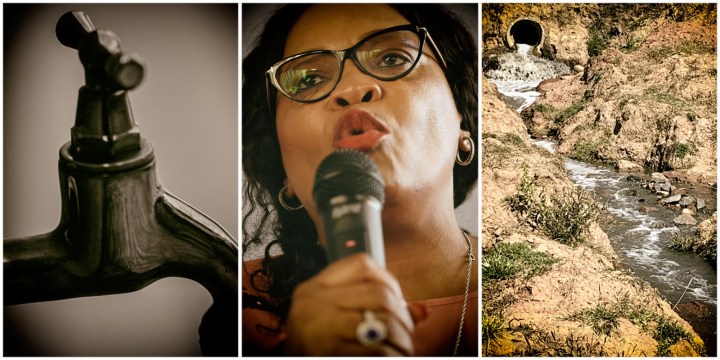
Most Free State municipalities have no plans to fix failing sewage treatment plants fouling streets and rivers.
A year ago the Department of Water and Sanitation (DWS) reinstated its assessment of the country’s 995 wastewater treatment plants.
The results were dismal.
A third of South Africa’s water systems were deemed critical and were instructed to submit a corrective action plan within two months.
One year later, 75% of them have failed to do so.
The worst offender is the Free State province, where two out of three wastewater plants did not meet national standards for sewage treatment.
The list of egregious offences by these municipalities includes vandalised, run-down or abandoned plants that the DWS says could cause disease outbreaks.
Yet there seems to be no urgency to improve the crumbling infrastructure – or even request offered help from the department.
The Green Drop report, produced by the department, assesses all 995 wastewater treatment plants around the country. The latest report, published in March 2022, was the first in roughly nine years after reports were discontinued in 2015 under former Minister of Water and Sanitation Nomvula Mokonyane.
These assessments are crucial to monitoring South Africa’s water systems: the plants are tasked with purifying wastewater (including sewage) so that the water can safely be discharged into rivers before eventually making its way back to homes and taps.
Facilities are given a final Green Drop score based on their performance across a range of areas. Marks are heavily reliant on plants’ financial management and the quality of the water they treat and release, which is tested for bacteria found in human waste — like E. coli — as well as a host of other chemicals.
Each plant receives a score: more than 90% indicates an excellent water system and below 31% means the facility is dysfunctional. In 2022, one in three wastewater treatment plants nationally was considered critical.
Municipalities with dysfunctional plants were instructed to submit a corrective action plan within 60 days of the Green Drop report being published, setting out how they planned to rescue their failing infrastructure.
Yet, one year later, only 19 municipalities covering 82 of the 334 dysfunctional systems – 25% – have submitted the required plans, according to information provided by the department.
The Free State’s failure
Securing its slot as the least compliant province is the Free State.
Despite almost every single municipality falling into the dysfunctional category, only one actually got around to submitting the necessary plan.
Two out of three wastewater systems in the Free State are in critical condition, and 80% of these had not created any kind of plan to deal with their failing systems.
Limpopo was not far behind: none of the 50 plants deemed to be in a “critical” state submitted the required action plans to the department. Explore the data here.
One of the few Free State municipalities making an effort is Matjhabeng, which has provided action plans for 10 out of its 11 critical systems, including the wastewater treatment plants in Welkom and Virginia.
The other is Masilonyana, which requested support from the department to create plans for its three failing plants (Brandfort, Theunissen-Masilo, Winburg).
The remaining 51 dysfunctional water systems in the province have not bothered to give any indication of how they plan to fix the problem.
The cost of failure
Unsurprisingly, this level of disrepair is not cheap to fix. In total, the department estimates that it would cost around R930-million to get every single one of the plants in the Free State back into working order.
The price is determined by the size of the systems, the technology being used and how much work needs to be done.
Among the municipalities with the biggest bills are Maluti-a-Phofung and Matjhabeng.
If you want to take a closer look at how each municipality spent its operations and maintenance budget, you can click through on the graph below.
Poisoning the Vaal
The impact of this collapsing infrastructure spreads beyond the borders of the Free State.
The province is home to two major rivers, the Orange and the Vaal.
The Vaal Dam supplies water to Gauteng and is a major water source in South Africa, with around 19 million people depending on it for both domestic and commercial use.
“The Vaal is now polluted beyond acceptable standards, and the cause is the kilolitres of untreated sewage entering the Vaal because of inoperative and dilapidated wastewater treatment plants which have been unable to properly process the sewage and other wastewater produced,” according to a 2021 inquiry by the South African Human Rights Commission.
At least part of this pollution is coming from the Free State.
Mafube municipality, an hour’s drive from the Vaal Dam, has five treatment plants — all of which feed into the Vaal River. In the nine years since its last Green Drop assessment, Mafube dropped its score from 36% to zero.
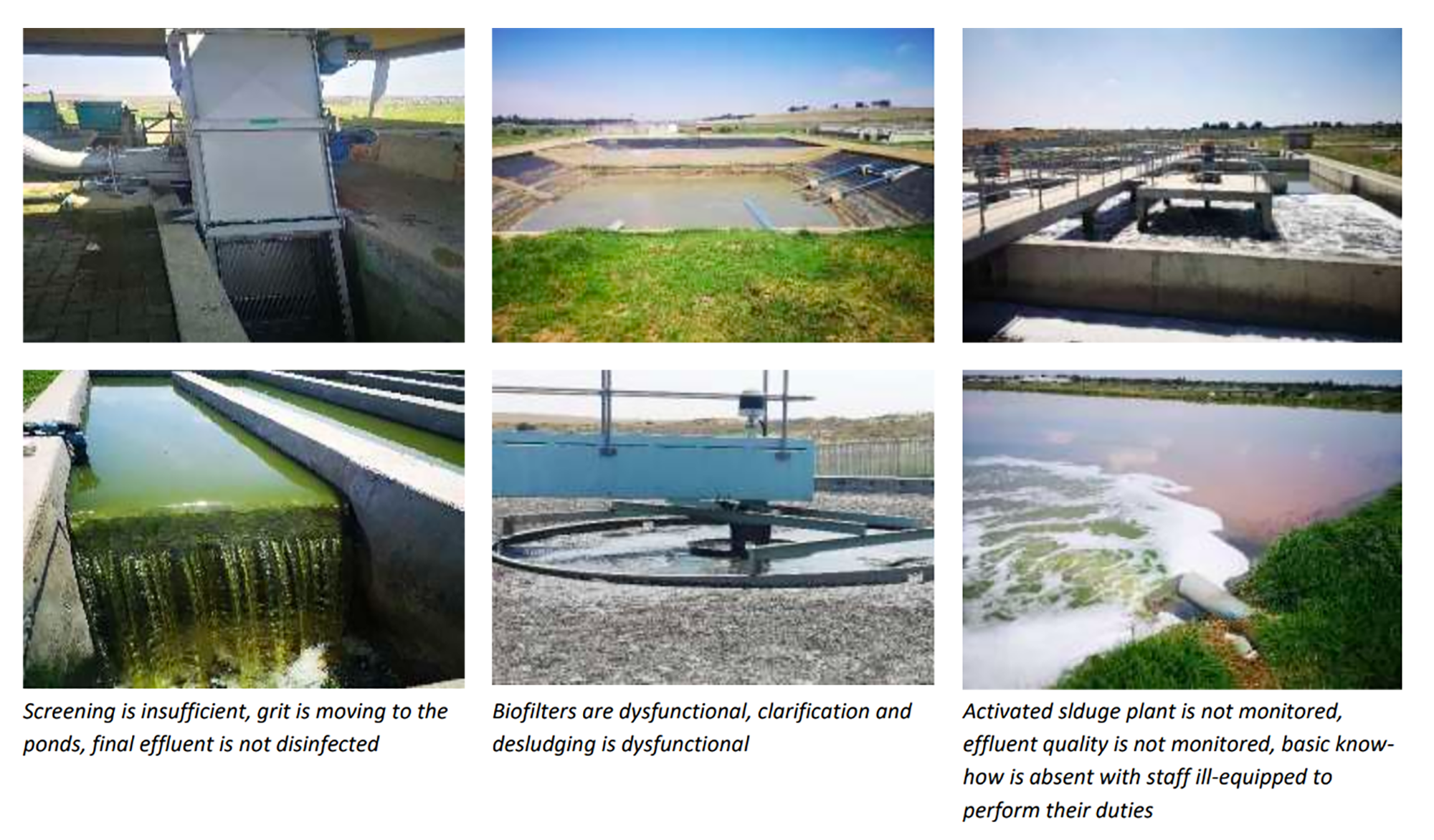
Some pictures in the Green Drop of Villiers treatment plant in Mafube, which feeds directly into the Vaal River. (Images: Supplied)
The Green Drop report describes a “dreadful state of negligence, lack of management commitment, effort or duty to maintain public assets”.
There is no monitoring in place at the treatment plants, equipment is broken and there are no financial records available for the water systems, last year’s Green Drop report notes.
“A run-to-failure strategy is allowed without any apparent intervention from the municipal leadership,” says the report.
The neglect is seen throughout the province where seven out of 19 municipalities have plants that have simply been abandoned, according to the Green Drop report.
Among these is the Gariep Dam wastewater treatment plant. One of the plant’s pump stations has been broken for two years, according to the report, and is “discharging raw sewage to the adjacent nature reserve”.
The poop does not stop there, however: raw sewage had flooded the entire area where the plant was and was flowing into neighbouring spots. In addition, a lot of the equipment was overrun with weeds and the offices had been vandalised.
Gariep Dam is the largest reservoir in the country and feeds into the Orange River, playing a major role in irrigation. Contamination of this water has implications for agriculture and consuming food irrigated with this water could lead to the spread of foodborne diseases.
The recent cholera outbreak in South Africa, with 10 confirmed cases in Gauteng, including one death, is being traced back to contaminated water. The National Institute for Communicable Diseases is investigating the Jukskei River and Klip River, which feed into the Vaal, as possible sources for the infections.
In two other municipalities, inspectors found that sewage treatment plants were not properly disposing of sludge. Sludge is a byproduct of wastewater treatment and is a mix of organic matter and human waste. In these cases, the lack of disposal allowed local farmers to retrieve sludge from the plant for use as fertiliser. Inspectors noted that there are no safety standards or regulations for using partial human waste as fertiliser.
Everything is broken
Another danger zone, marked by the report as “an emergency situation, posing serious environmental, health and water resource risks”, was Maluti-A-Phofung municipality, home to QwaQwa and Harrismith.
The municipality saw a steep drop in its Green Drop score from 76% in 2013 to 18% in the most recent survey – and the existing efforts in place could not salvage the “alarming rate of deterioration in infrastructure”, says the report.
“Not one of the seven wastewater treatment works (WWTWs) is functional due to vandalism and the absence of security measures to protect property. The lack of maintenance and WWTWs being abandoned have resulted in a total collapse in wastewater management at the most fundamental levels.”
There are 30 pump stations within the municipality, every single one of which has been vandalised due to lack of security at the plants. The broken stations then send raw sewage into rivers and streams. The only plant the report deemed not dysfunctional was “Tshiame WWTW where the raw sewage is diverted to ponds”.
Manholes by the systems either had broken covers or no covers at all. This led to blockages and breaks in the pipes, which resulted in “raw sewage flowing in streets or into the field close to residential areas, with no or delayed response”.
The dire situation in Maluti-A-Phofung is indicative of a larger problem, not just in the Free State but across the country. Water provision is a basic human right and yet its supply has been left mostly unmonitored and unchecked.
The nine-year gap in Green Drop assessments allowed several functional plants to reach a state of total collapse. And one year later, these dysfunctional plants have still not managed to put in place any sort of plan or strategy to halt the continuing pollution and damage they are causing to the environment and people’s health. DM/OBP
If you want to know more about your water, you can explore all the status of South Africa’s treatment plants on Water Wazi here.

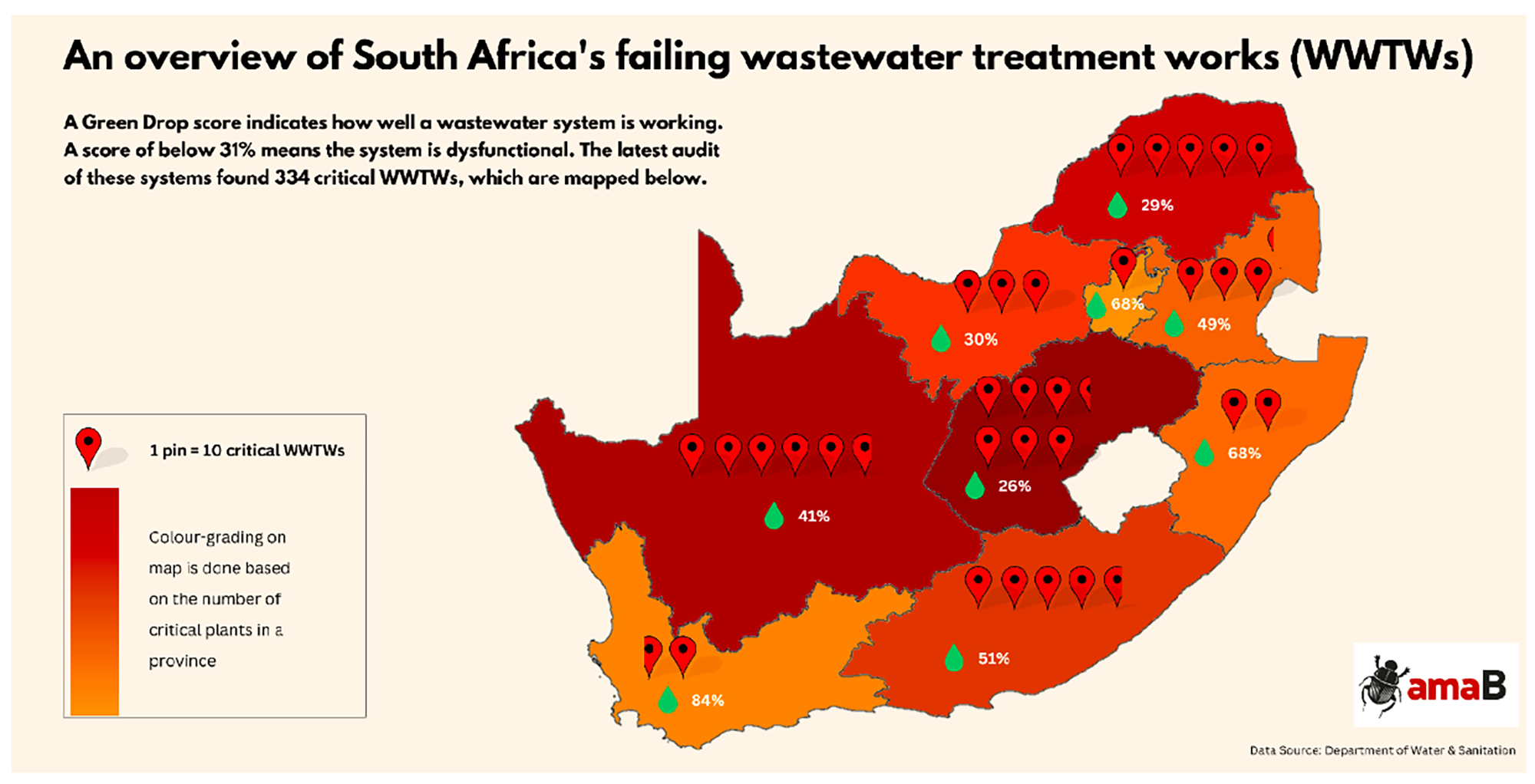
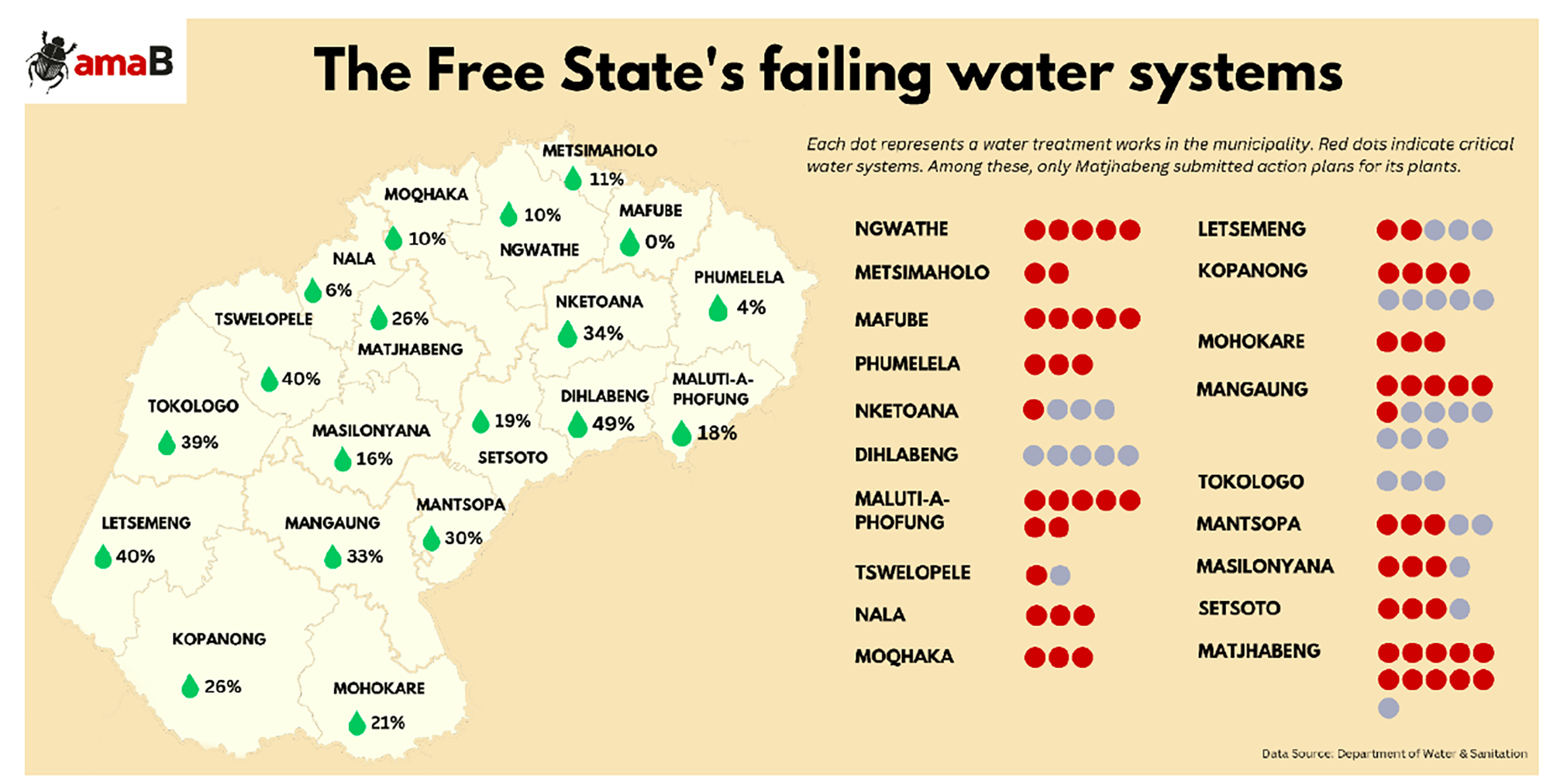
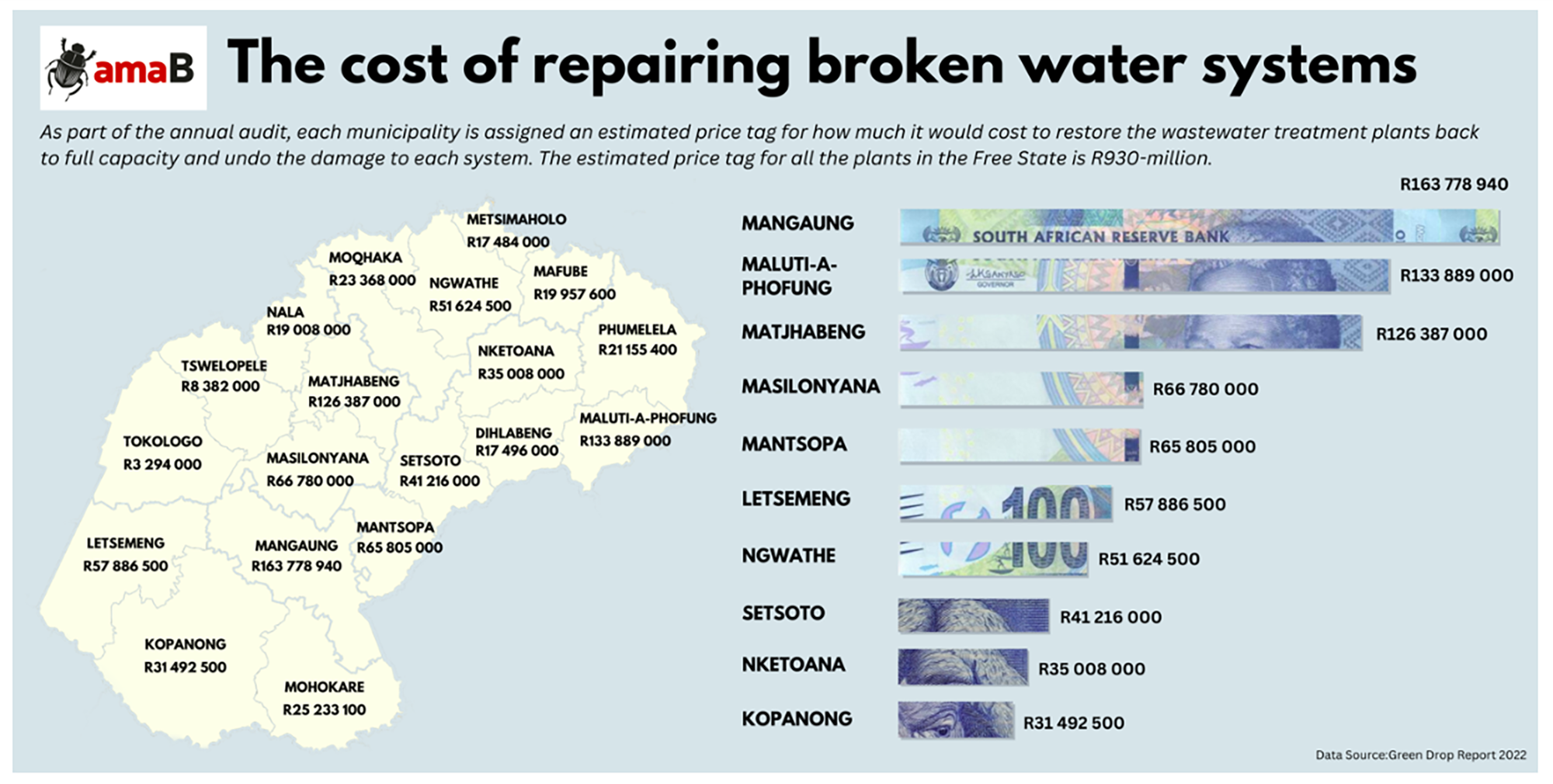
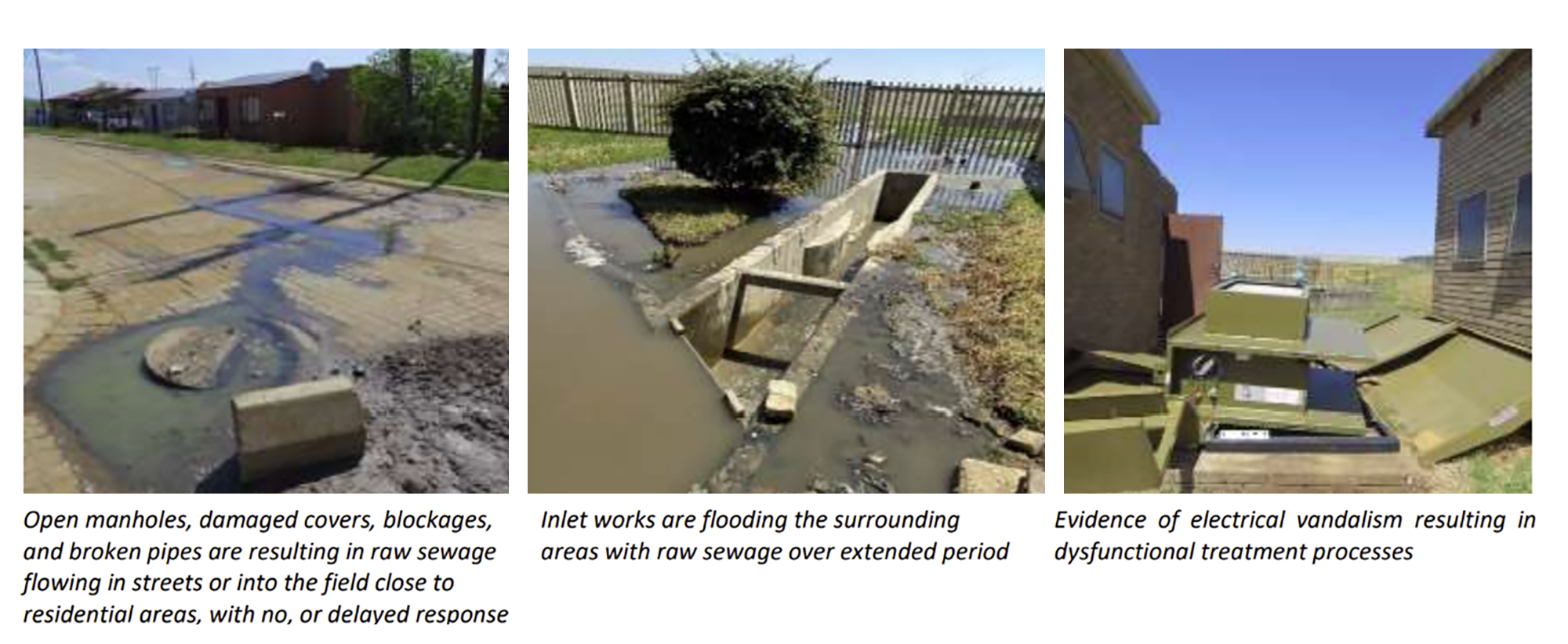


















Why is maintenance such a big problem in South Africa? There has been hardly any serious maintenance since the ANC came into power. Nobody seems to be looking further forward than their own nose and own interests. This bad habit seems to start high up and goes down to the smallest municipality in the country.